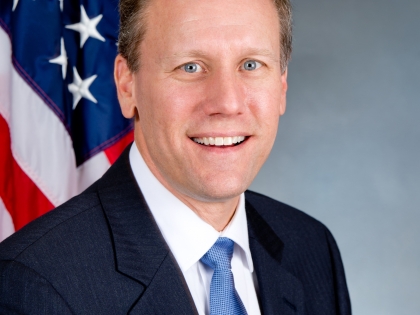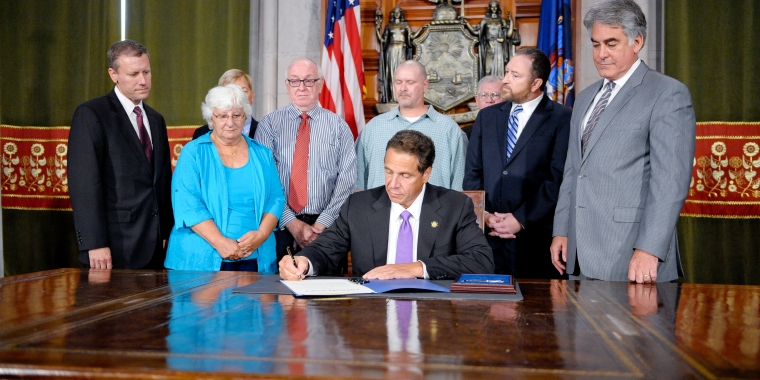
Senator Valesky Introduces Legislation to Expand Historic Rehabilitation Tax Credit
David J. Valesky
March 9, 2010
-
ISSUE:
- Economic Development
SYRACUSE, N.Y.—State Senator David J. Valesky (D-Oneida) introduced legislation (S.7042) today that would expand provisions in the Historic Rehabilitation Tax Credit (HRTC) program and would clear the way for several major development projects in Upstate New York to begin.
“Expansion of the Historic Rehabilitation Tax credit will translate into direct and immediate economic benefits for Central New York through new investment and job creation,” Senator Valesky said. “This legislation addresses the needs of larger projects, and will ultimately reignite economic activity on our Main Streets, and bring people and businesses back to our communities.”
The HRTC, signed into law in July 2009, provided incentive for the rehabilitation of historic residential and commercial properties, encouraging reinvestment on Main Streets across Upstate New York.
Amendments to the current law expand what the program can accomplish by aligning the tax credits to address the specific needs of larger commercial projects so that it can accomplish its full potential and stimulate the highest levels of economic development across Upstate. New provisions would put New York State’s tax credit program on par with successful programs in other states.
“The federal and state historic rehabilitation tax credit programs are among the City’s most effective tools for economic development,” said City of Syracuse Mayor Stephanie A. Miner. “ I applaud Senator Valesky and his colleagues for proposing the necessary changes that will allow this program to unleash the full potential of our community’s historic assets.”
“The amendment proposed to the Historic Rehabilitation Tax Credit will allow it to function as it was intended when it was expanded in 2009 – specifically, to jump start important projects across New York, particularly Upstate cities,” said Robert M. Simpson, president and CEO of the Metropolitan Development Association of Syracuse & Central New York. “We strongly support the bill introduced by Senator Valesky as it will allow this credit to become a powerful and predictable tool to for the private sector to produce new jobs and development.”
The new legislation grants project developers the ability to allocate the state credit within a partnership or LLC different from the federal tax credit, and the ability to apply the credit against the bank and insurance tax.
“As soon as these changes are made, we will see shovels in the ground. We have the opportunity to work together to remove this obstacle to development in Upstate New York, and I implore my partners in government to move quickly to support reinvestment in our communities with immediate effects,” Senator Valesky said.
ADDITIONAL QUOTES IN SUPPORT OF S.7042 FROM CO-SPONSORS
Senator Darrel Aubertine (D-Cape Vincent):
“The historic preservation tax credit program we passed last year and this new component will serve as a driving force for redevelopment. The changes made in this new legislation will open up a new set of opportunities for commercial properties to be fixed up and ready for business.”
Senator Craig Johnson (D-Nassau):
“This bill will turn a good law to preserve our state's rich heritage into a great law that will help spur job creation when we need it the most. I applaud Senator Valesky for introducing this very important legislation.”
Senator William T. Stachowski (D-C, Lake View):
“I fully support Senator Valesky in this effort to strengthen current law affecting the rehabilitation of historic properties. By further extending the historic rehabilitation tax credit program so that commercial properties can be more fully included, we will help sustain the unique historical and cultural importance of many buildings throughout the state. In addition to
protecting the historic heritage of our hometowns, many jobs will be created as a result of this legislation greatly impacting our local economy.”
Senator Antoine M. Thompson (D- D-Parts of Erie & Niagara Counties):
“This legislation is essential to revitalizing urban neighborhoods and creating jobs in Niagara Falls and Buffalo.”
BACKGROUND ON THE 2009 HISTORIC REHABILITATION TAX CREDIT
The 2009 HRTC provides incentive for developers to undertake projects that repurpose historic structures in distressed communities, including much of Upstate’s urban cores. In the past generation, commercial and residential growth has shifted away from cities and villages, creating vacant, underutilized and deteriorating areas, making it difficult to attract and retain new investment, new businesses and new residents.
The rejuvenation the program promotes has the potential to drastically and broadly change the Upstate economy, helping to reverse the population change and encouraging growth that will decrease the strain on property taxpayers.
The HRTC strengthens the state’s program first launched in 2006, making New York State more competitive against the nearly 30 other states with similar programs which have seen significant economic stimulus as a result, leveraging $3 to $5 dollars for every state dollar invested.
Specifics of the program include:
• Increasing the cap on commercial credit value from $100,000 to $5 million; the residential credit value will increase from $25,000 to $50,000.
• Limiting the availability of the residential and commercial credit of the program to “distressed” areas, which is defined as being located within a Census tract identified at or below one hundred percent of the median family income.
• Increasing the percent of qualified rehabilitation costs that can be claimed for the credit from 6 percent to 20 percent, allowing for a higher percentage of qualified rehabilitation costs.
• Making the credit assignable, transferable, and conveyable within business partnerships, to allow for greater flexibility on the part of the investor, and attract out-of-state financing to in-state rehabilitation projects.
• Offering the rehabilitation tax credit as a rebate to make the program a stronger financial incentive for homeowners without significant income tax liability.
##
Share this Article or Press Release
Newsroom
Go to Newsroom